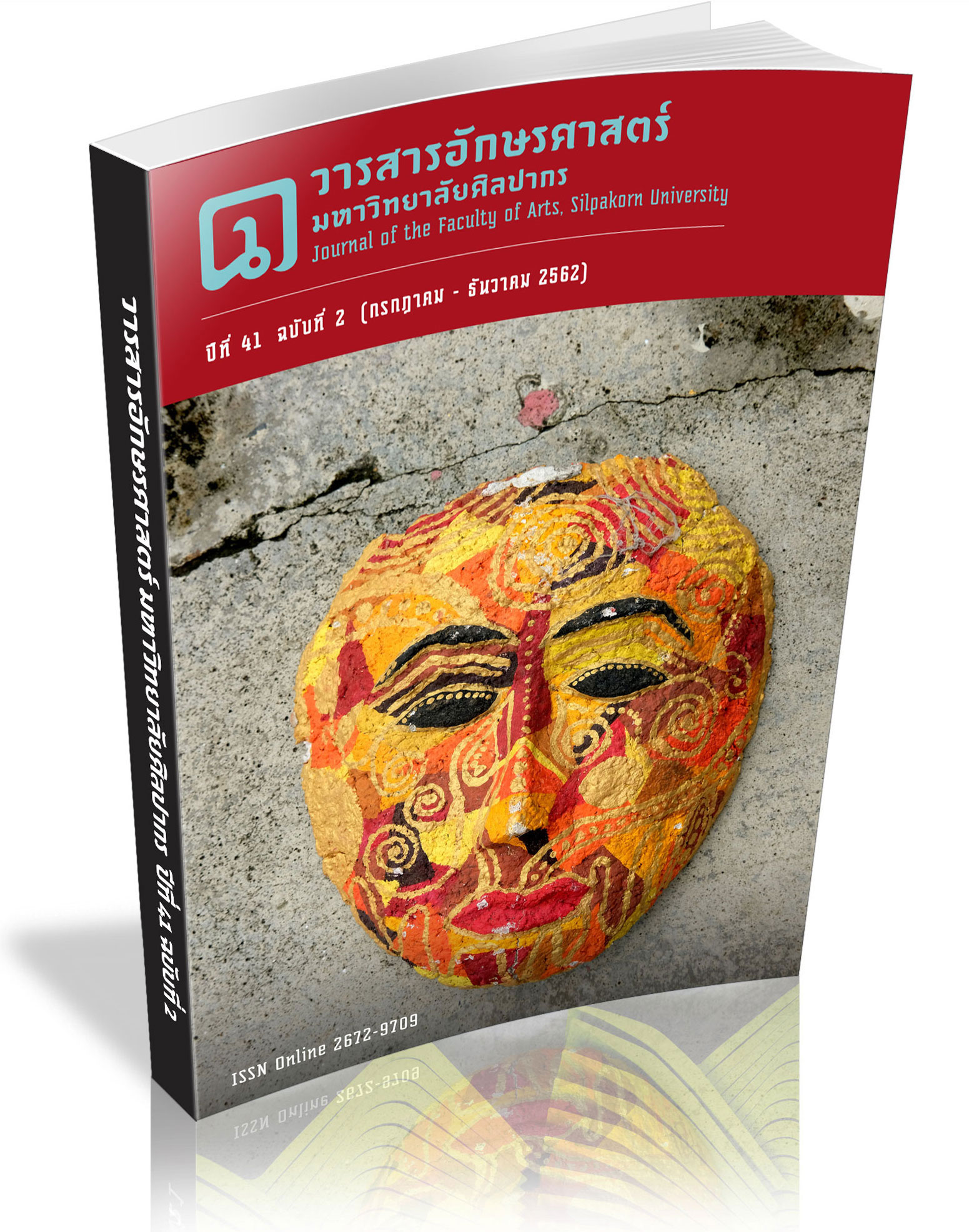Semantic and Grammatical Structures of Thai Dish Names Translated into French
Keywords:
Translating Thai into French, Thai Dish name, Semantic structure, Grammatical structureAbstract
This article aims to investigate the semantic and grammatical structures of Thai dish names translated into French. The research data were menus collected from 15 Thai restaurants situated in France. The framework of French naming of Bosredon was adopted. The results show that most Thai dish names in French consisted of at least two phrases. The head of the name was a noun phrase and could be qualified by noun phases, adjectival phrases or prepositional phrases. The first noun phrase played the role of category element and the others as the distinctive element. The category element was classified into nine semantic fields, and 13 semantic fields for the distinctive element. The selection of semantic field for the category element or the distinctive element depended on the translators preference of emphases. Consequently, one Thai dish name could have more than one French translation.
Downloads
References
Bosredon, B. (2006). Titre et noms propres: des voisins ou des cousins ? In Riegel et al. (Eds.). Aux carrefours du sens, pp. 487-497, Louvain: Peeters.
Bosredon, B. (2012). Entre dénomination et catégorisation : la signalétique. Langue française, 174(2) : 11-26.
Bosredon, B. & Guérin, O. (2005). Le Cluny, le Champollion: d’un emploi non prototypique de nom propre modifié. Langue française, 142(2) : 9-22.
Changprachak, W. (2016). The Use of Thai Transliteration in Translation of Thai to English from a Cookbook “Samrub Thai Soo Krua Lok: Thai Favorites to World Kitchen”. Journal of Humanities and Social Sciences Mahasarakham University. 35(1) : 220-228. (In Thai)
CNN travel. (2018). The World’s 50 best foods. Retrieved June 20, 2019, from https://edition.cnn.com/ travel/article/world-best-food-dishes/index.html
Gaston, S. (2011). Translating Thai Dish Names. In Thanomnuan O’Charoen and Tongthip Poonlarp (Eds.), Translation and Interpretation in a Multilingual Context, pp. 139-150, Bangkok: The Chalermprakiat Centre of Translation and Interpretation, Faculty of
Arts, Chulalongkorn University.
Klinkajorn, N. (2002). Thai Cookbook Translation Strategies: Case Study of Spicy Thai Cuisine. Master Thesis in Language and Culture for Communication and Development, Mahidol University, Nakhon Pathom, Thailand.
Kosolritthichai, W. (2015). Strategies for French Translation of Thai Dish Names. Proceeding of Thailand National Seminar on French Translation. pp. 112-121, Thailand National Symposium on French Translation, August 28-29, 2015. Bangkok, Thailand (In Thai)
Kotschever, L.H. & Withrow, D. (2007). Management by Menu, Study Guide. New Jersey: Johm Wiley and Sons.
Le Petit Robert 2012. (2011). Paris: Le Petit Robert.
Low, P. (2013). Thai Food Culture through Grammatical Patterns of English Translation. The Asian Conference on Education 2013: Official Conference Proceedings, pp. 1172-1184, The Asian Conference on Education 2013, October 23-27, 2013. Osaka, Japan.
Office of the Royal Society. (2017). The Royal Society Dictionary of Linguistics Terms (General Linguistics). Bangkok: the Office of Royal Society. (In Thai)
Pankhuenkhat, R. (2009). Thai Linguistics. Nakhon Pathom: Mahidol University. (In Thai)
Royal Thai Institute. (2001). Royal Institute Dictionary, 1999 Edition. Bangkok: Royal Thai Institute. (In Thai)
Samu, M., Tahey, N & Dolo, M. (2017). An Analysis of Language Structures Used in Translating Thai Food Names from Thai to English. Journal of Humanities and Social Sciences University of Phayao. 5(1) : 68-80. (In Thai)
Vorajaroensri, P. (2002). An Analysis of Translation Strategies Used in Thai Restaurants Menus. Master Thesis in English, Srinakharinwirot University, Bangkok, Thailand.
Downloads
Published
How to Cite
Issue
Section
License
ผู้เขียนบทความต้องยินยอมในข้อกำหนดต่าง ๆ ของวารสารก่อนส่งบทความตีพิมพ์




